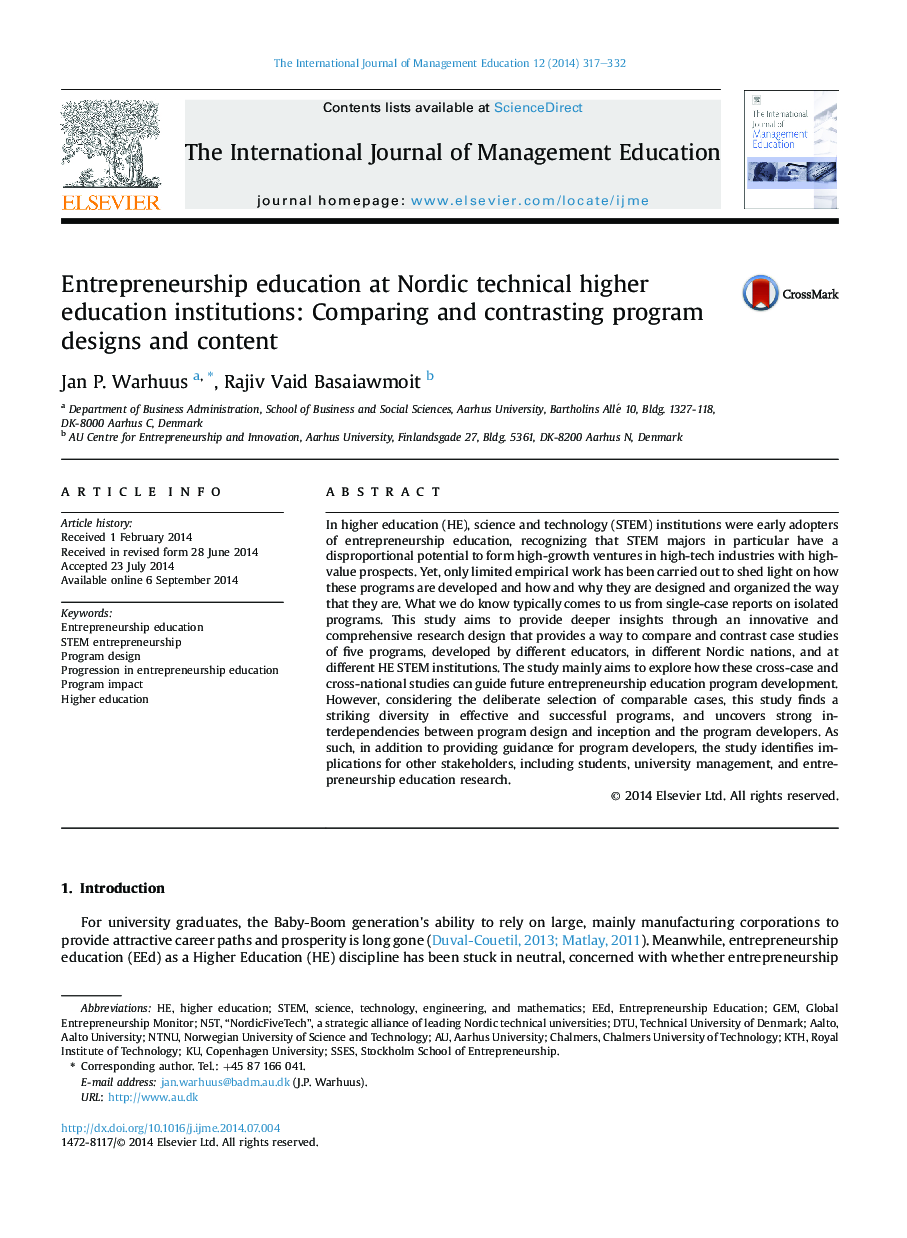| Article ID | Journal | Published Year | Pages | File Type |
|---|---|---|---|---|
| 357389 | The International Journal of Management Education | 2014 | 16 Pages |
•HE STEM entrepreneurship is important and a frame of reference needed to explore it.•Innovative research design is needed to reveal patterns across Nordic STEM programs.•We found striking diversity among programs and strong interdependencies across them.•STEM students with commercialization interests need to choose institution carefully.•Aspiring directors need to carefully consider career impact and management support.
In higher education (HE), science and technology (STEM) institutions were early adopters of entrepreneurship education, recognizing that STEM majors in particular have a disproportional potential to form high-growth ventures in high-tech industries with high-value prospects. Yet, only limited empirical work has been carried out to shed light on how these programs are developed and how and why they are designed and organized the way that they are. What we do know typically comes to us from single-case reports on isolated programs. This study aims to provide deeper insights through an innovative and comprehensive research design that provides a way to compare and contrast case studies of five programs, developed by different educators, in different Nordic nations, and at different HE STEM institutions. The study mainly aims to explore how these cross-case and cross-national studies can guide future entrepreneurship education program development. However, considering the deliberate selection of comparable cases, this study finds a striking diversity in effective and successful programs, and uncovers strong interdependencies between program design and inception and the program developers. As such, in addition to providing guidance for program developers, the study identifies implications for other stakeholders, including students, university management, and entrepreneurship education research.
